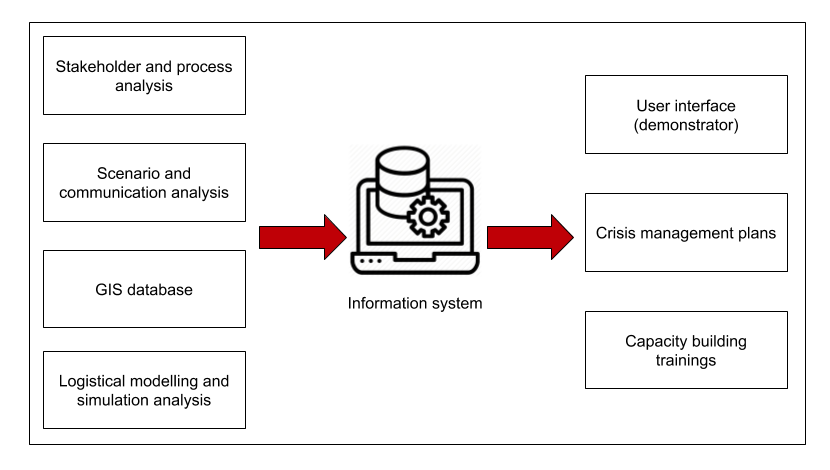The BISKIT-project consists of three different phases. The objective of the first phase is to achieve a comprehensive understanding of the crisis management and blood transfusion systems of our partner countries, including their vulnerability of the latter to different crisis situations. In the second phase, we will set-up the information system. Finally, the user interface as well as crisis management plans will be developed. We will offer capacity building trainings on the use of the demonstrator and the crisis management plans to the relevant stakeholders.

The Paul-Ehrlich Institut and the Working Group Interdisciplinary Security Research (Freie Universität Berlin) will conduct stakeholder and process analyses with the objective to model the entire blood transfusion and crisis management systems of our partner countries. In addition, they will conduct scenario and communication analyses to illustrate how different crises scenarios might affect blood supply in our partner countries, and how crisis communication works.
The Chair for Software & Digital Business (Technical University of Darmstadt) will mathematically model the respective blood supply chains from a logistical perspective using GIS-data (provided by eHealth & Information Systems Africa gGmbH), determine potential improvements and analyse them by creating an appropriate simulation environment. In cooperation with the European Research Center for Information Systems (University of Münster), they will elaborate on (near-) optimal solutions for the different crisis scenarios, including the planning of storage locations, transportation routes, human resource management etc., and develop forecasts on blood supply and demand. Furthermore, they will test alternative strategies to cope with the different crisis scenarios conducting a simulation analysis.
The European Research Center for Information Systems (University of Münster), together with eHealth & Information Systems Africa gGmbH, will develop the information system which can support data-based decision-making. Using well-elaborated methods from the Enterprise Architecture domain, they will assess the current state of information system usage in the blood supply chains of our partner countries, and determine its key requirements from the blood establishments’ perspective. Afterwards, they will define and model an idealized to-be state, taking the organisational interactions between processes, software applications and information infrastructures of all partners in the blood supply chain into account, and derive the specification for the software elements of the user interface demonstrator, which will finally be developed by eHealth & Information Systems Africa gGmbH.
The BISKIT-consortiums plans to continuously work together with the African project partners to assure that the information system as well as the user interface correspond to their needs. For this purpose, the Paul-Ehrlich-Institut and the Working Group Interdisciplinary Security Research (Freie Universität Berlin) will take the lead to organize capacity building workshops to train and familiarize future users with the information system, and to illustrate its functioning in the different scenarios named above. Finally, they will summarize the results in crisis management plans including recommendations for crisis communication strategies.
